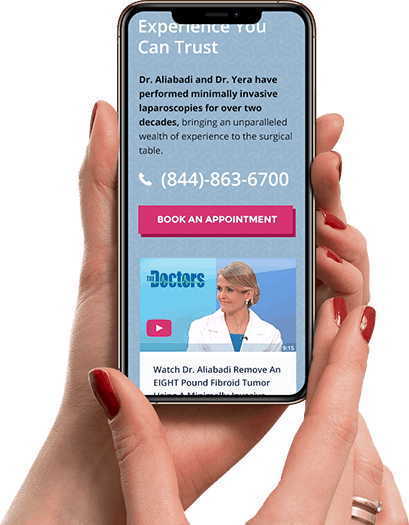Endometriosis may be a well-known condition, but it can still be difficult to treat and even more challenging to diagnose. Researchers don’t fully understand what causes endometriosis, but they are gradually learning more about what can influence the condition and who may be at risk. One of their latest findings is that individuals with higher levels of cadmium in their system, a toxic element, may be more likely to develop endometriosis.
How could a gynecological condition be linked to a heavy metal often found in soil and rocks? Let’s take a closer look.

What is endometriosis?
First, it’s helpful to understand what endometriosis is. Endometriosis is considered a common condition, affecting more than 11% of women in the United States between the ages of 15 and 44. When you have endometriosis, a tissue that acts like endometrial tissue (uterine tissue) grows outside the uterus.
Menstrual cycle hormones can affect this misplaced tissue just as they do your endometrium. Except where hormones trigger the tissue inside your uterus to shed during your period, they cause endometriosis tissue to become inflamed.
As a result, you can experience painful and uncomfortable symptoms. The condition may also cause cysts, lesions (endometriomas), and adhesions (when the tissue fuses two reproductive organs). Scar tissue from endometriosis can be found in multiple parts of the body, depending on where the endometrial tissue has spread, including:
- Fallopian tubes
- Immediate areas surrounding the uterus
- Ovaries
- Peritoneum
- Bladder
- Diaphragm
- Rectum
- Intestines
- Vagina
What are the symptoms of endometriosis?
Endometriosis affects everyone differently but can impact a wide range of bodily symptoms depending on where the endometrial-like tissue has spread. Common symptoms can include:
- Lower back and pelvic pain
- Severe pain with intercourse, bowel movements, or urination
- Intensely painful periods and menstrual cramps
- Excessive bleeding during or between periods
- Constipation
- Infertility
Some individuals find that endometriosis symptoms improve with menopause, though it isn’t the case with every individual.
Unfortunately, diagnosing and treating the condition can be tricky because it overlaps with the side effects of other medical conditions. On average, it takes eight years to get endometriosis diagnosed.
What causes endometriosis?
Unfortunately, the cause of endometriosis is still unknown. Some scientists believe there is a genetic link having to do with impaired function of the immune system. Some immune cells may contribute to the growth of endometrial cells.
Another theory is retrograde menstruation, a not-uncommon part of menstrual periods in which menstrual blood endometrial cells and other debris that have been sloughed off the lining of the uterus during your period and then flow upward through the fallopian tubes and into the pelvic cavity. Usually, retrograde menstruation isn’t a problem. Until it results in endometriosis.
Other researchers cite risk factors like menstruation abnormalities, such as having a shorter, longer, heavier, or lighter period. Things such as fallopian tube defects and the age at which you start menstruating may also influence how likely you are to develop endometriosis.
Because the condition isn’t yet fully understood, any new research is beneficial and exciting for those searching for relief, bringing us to the latest study on the environmental contaminant, cadmium.

Call 877-760-3564 or click here to schedule online
What does new research say about cadmium and endometriosis?
A better first question might be, what is cadmium? A naturally occurring compound, cadmium is a heavy metal that is considered highly toxic. The substance can also be produced from human activities, like smoking cigarettes. According to the Centers for Disease Control (CDC) industrial processes such as making plastics, metal soldering, manufacturing batteries, burning municipal waste, and use of fossil fuels can also contribute to cadmium levels in the environment.
When cadmium enters the soil and water, it can be absorbed by plants and organisms, eventually making its way into our food supply. Not a great thing considering it is considered very unsafe for humans.
How much cadmium is safe?
According to the Agency for Toxic Substances and Disease Registry (ATSDR), 0.0002 mg/kg/day of cadmium is the limit of how much cadmium can safely be ingested orally; a very small amount. Though most people don’t purposefully consume it, breathe it in, or even touch it, cadmium’s presence in food and water means we can ingest it unintentionally.
Too much cadmium in your body can build up in your kidneys, causing renal issues, while inhaling the substance may lead to lung damage and even death. Additionally, cadmium is considered a cancer-causing agent by the CDC.
Therefore, entities like the Environmental Protection Agency (EPA) keep a close eye on how much cadmium is in the environment, checking for safe levels of cadmium in the soil, water, and air.
Environmental contamination and endometriosis, the link
The recent associations between environmental contaminants like cadmium and endometriosis might not be able to produce specific recommendations on decreasing your risk of the disease. Still, it is helping scientists discover which people may be at higher risk.
Scientists have known for some time that environmental pollutants can act as endocrine disruptors, affecting reproductive health and function in those who are exposed. But a recent study found that cadmium in particular can behave like estrogen in the body, the same hormone that plays a crucial role in the development of endometriosis.
In looking at 1,750 U.S. women age 20 to 54, they found that those with slightly to moderately elevated levels of cadmium were twice as likely to have endometriosis than those with lower levels. Interestingly, those with levels beyond moderate only had a 60% increased risk.
Researchers noted that it isn’t a simple relationship when it comes to endocrine-disrupting chemicals like cadmium and endometriosis, meaning that various levels of exposure can produce different effects on the body. It’s not a clear dose-response relationship; a fact that requires additional research.
Does this affect the diagnosis and treatment of endometriosis?
Endometriosis is usually diagnosed when symptoms are brought up to a gynecologist. Our provider usually will do a pelvic exam that can include a transvaginal ultrasound to get a better look at what’s going on around your pelvic organs. Based on the results, we might recommend an MRI or even a laparoscopy (when they use a small camera placed through tiny incisions to view inside your abdomen or take a biopsy) to get more detailed information.
Depending on the severity of the disease and your health goals you may be given one of two common ways of treating endometriosis. The first of the treatment options is medication that can manage symptoms and aid fertility (if desired). Usually, hormonal birth control pills, contraceptives like an IUD, or hormone therapies may be used to manage progesterone and estrogen which can influence endometriosis. For management of pain and inflammation, your doctor might suggest pain medication like non-steroidal anti-inflammatory drugs (NSAIDs) like ibuprofen. The second treatment consists of surgical intervention to remove lesions and tissues through laparoscopic surgery or, in severe cases, remove the entire uterus (hysterectomy).
While new data on the link between cadmium and endometriosis might take time to change how the disease is diagnosed and treated, doctors may begin suggesting women reduce their exposure to cadmium. In the meantime, scientists involved in the study stated that healthy lifestyle changes, such as not smoking and eating a well-balanced diet, can lower your exposure to environmental contaminants, including cadmium.
Worried about endometriosis? Contact the Outpatient Hysterectomy Center
Drs. Aliabadi and Yera are renowned masters of gynecology, obstetrics, and gynecological surgery. Patients travel from around the country to be treated at the Outpatient Hysterectomy Center and Dr. Aliabadi even travels to teach her surgical expertise to other doctors.
OHC is committed to providing the best women’s health care; our staff chooses the least invasive treatment option whenever possible.
We invite you to establish care with the Outpatient Hysterectomy Center. Please make your appointment online or call us at (844) 863-6700.
The Outpatient Hysterectomy Center is conveniently located for patients throughout Southern California and the Los Angeles area. At the Cedars-Sinai Medical Center, we are near Beverly Hills, West Hollywood, Santa Monica, West Los Angeles, Culver City, Hollywood, Venice, Marina del Rey, Malibu, Manhattan Beach, and Downtown Los Angeles.











